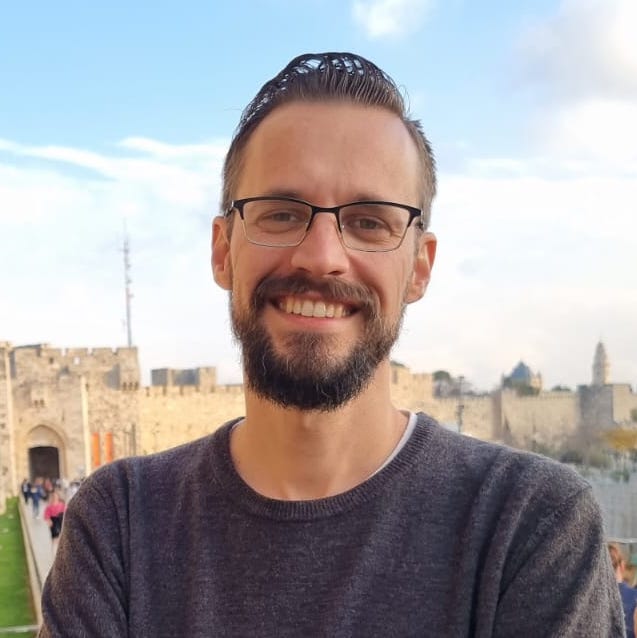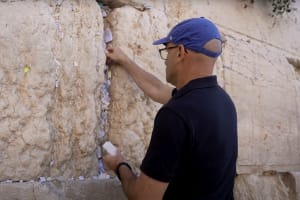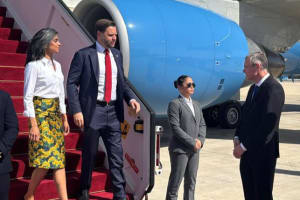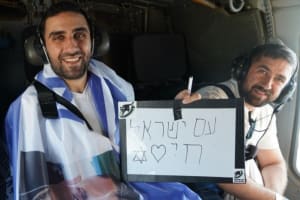Israel’s greatest weakness and its deepest strength: The pursuit to bring each hostage back home

Israel is holding its breath today. Something many thought would never happen is finally unfolding – the last hostages are coming home.
But not all of them are alive.
Of the 48 hostages being returned, 20 are alive and 28 are bodies. For their families, this is both a homecoming and a heartbreak.
Twenty-eight families are preparing, perhaps, to finally bring their loved ones home, or perhaps, to face disappointment once again. Israel has insisted on this point with Hamas, that each and every body must be returned. The agreement required that all 48 hostages, alive or dead, must be returned within 72 hours. Almost immediately, Hamas panicked – they don’t know where all the bodies are, and they can’t retrieve them within 72 hours.
As things stand now, Hamas will release as many as they can, and when they are out of options, an international task force will look for the missing bodies, using equipment and intelligence from Israel. Israel has information about some, but not all, of the murdered hostages. In Israel, there’s a dreaded word for a soldier or civilian whose body was never found – maklan, short for makom kevura lo noda, “place of burial unknown.”
There is an ethos in Israeli society that we don’t leave anyone behind, dead or alive, and that getting a dead body back is important. Outsiders often struggle to understand this obsession with bringing bodies home.
I used to be skeptical of this. Why insist on returning bodies, even at a heavy price? Wouldn’t that only encourage our enemies to kill rather than capture? But over time, I’ve come to see that what looks like weakness is actually strength. Knowing that Israel won’t give up on them is what gives the IDF soldiers the motivation to keep going. The fact that Israel keeps demanding the bodies and a full account of each and every one of the hostages has forced Hamas to keep track and made it impossible for them to get rid or forget even one.

Unlike many European countries, Israel doesn’t have a big monument for the “unknown soldier’s grave” because it’s in our ethos to identify each and every one, and mark each grave with a name and a story.
When the 2000th casualty of this war was killed, Ynet News published the full statistics and a website where you can see every person, their name, and their story. After Oct. 7th, Israelis also created an interactive map with a full account of all the different events, who was killed and where on that day. People worked night and day during the days after Oct. 7th to identify each and every body, every remnant, every tooth, to make sure they didn’t miss anything.
Is it our inherently Jewish love for maps and charts? Is it the Jewish religion that demands a grave and places great importance on preserving the body and burying it correctly? Is it “payback” because of how disposable our lives were in Europe during the Holocaust, when most bodies were cremated? Is it to document it to prove that it actually happened, since there will always be those who cry “fake”? Or is it maybe all of the above?
I don’t know. I do know for sure that our enemies don’t seem to share this same ethos of accountability for their dead. When Israel received the dead bodies of the Bibas family, the forensic investigation showed that the body of the woman was an unknown Gazan woman. Eventually, Shiri Bibas’ real body was retrieved, but it made me think – who was that Gazan woman, and where is her family? Did anyone care about her, or was she just one in a pile of bodies? The way Hamas’ health ministry published figures where grown men of fighting age were defined as babies, and the way we’ve seen the stories of Palestinian dead bodies on the streets after Hamas “purged” them as “collaborators,” all show me that they just don’t care. People die and/or are missing back and forth, and they don’t bother. But this is not unique to terrorist organizations – I get the impression that Russia and Ukraine don’t bother either.
The IDF has a separate unit dedicated to finding missing soldiers, called the “Eitan unit,” established after the Yom Kippur War in 1973, and they are dedicated to making sure that the list of missing IDF soldiers is kept to a minimum. They distinguish between “missing” and “maklan” (unknown burial place) depending on whether it’s possible to assess for sure whether the person was killed or not. According to the Wikipedia article on the unit (which is only on the Hebrew Wikipedia), there are 3 missing IDF soldiers (Ron Arad, Guy Hever, and Yehuda Katz), and 179 IDF soldiers with unknown burial places (maklanim). Altogether, there are 25 graves of “unknown soldiers,” not monuments, but puzzles to solve.
Throughout the war, there have been risky operations in which the Israeli military and the Mossad have located and retrieved hostage bodies from Gaza. I don’t know if the IDF is the only army in the world that does this – risking their lives to retrieve bodies, to give the family closure. But it wasn’t just in Gaza, and not just recent casualties. In May 2025, the Eitan unit found and retrieved the body of Zvi Feldman, who fell in the battle of Sultan Yacoub in Lebanon in 1982.
Following that operation, Israeli Channel 12 news interviewed the historian Gur Alroey, who works with the Eitan unit on the 1948 Independence War. He digs into the historic archives of 1948, interviews people, and solves these puzzles. Specifically, the 1948 war is problematic because the Eitan unit didn’t exist yet, and the documentation was a lot messier. After the war, there were about 150 soldiers with unknown burial places, and their families never got closure. The issue was further complicated as many bodies were defaced and destroyed by the enemy, just like on Oct. 7th, and they didn’t have the technology in 1948 to identify them. In the middle of the 80s, the Eitan Unit decided to extend its investigations to include cases from 1948.
In the interview, Alroey explains how he solved a number of cases, but that they often take months – and even years. In one case, he found that a burial place of seven people really had eight slots, and was able to cross-reference it with documentation of the time and connect it to Mordechai Franko.
Franko’s parents, of course, passed away a long time ago and never had a grave to go to, but his three siblings cried from joy and now they go to his grave every month. It had taken 64 years, and they had his photo on their wall – and now they finally had an actual grave, they had the story of how he was killed. He was no longer just the brother who went to war and disappeared. Another case was a case study of how bad the documentation was in 1948 – the man he looked for, David Gutman, was still alive, and had done reserve duty and given lectures about the war he participated in. Alroey found himself sitting in Gutman’s living room, drinking coffee.
I don’t know where this urge to identify and retrieve every single body comes from – but it’s not from the government. It’s from below. It’s the families of the soldiers and hostages demanding it. There has been a lot of talk about whether it’s a good idea to scream about the hostages from the rooftops, as the Israelis have. Doesn’t that just raise the price that Hamas demands? Some people have said that maybe silent, behind-the-scenes diplomacy is a better way. But that was what Israel tried to do after Ron Arad disappeared in 1988 – and he was never found again. Ron Arad became a trauma for the Israelis, and ever since, the demand to get hostages back, no matter the cost, no matter if alive or a body, has been Israel’s top priority. And if it isn’t the government’s top priority, the people force it to make it that. Yes, it creates a huge weakness – it is maybe the biggest weakness in Israeli society. In fact, it’s probably the exact opposite of the “Palestinian resilience” our enemies talk about. But it’s also our biggest strength.
Today, as the last hostages come home – living and dead – Israel once again proves that it refuses to leave anyone behind. Yes, it’s a weakness. It makes negotiations harder and enemies bolder. But it’s also our deepest strength. It says that every life matters, every name must be known, every story deserves an ending. In a world where death so often comes cheaply, Israel insists that even the dead are not disposable. And that’s why, even in mourning, Israel never stops searching.

Is All Israel News’ faithful reporting important to you? Be part of it—help us continue by becoming a $5/month supporting partner.

Tuvia is a Jewish history nerd who lives in Jerusalem and believes in Jesus. He writes articles and stories about Jewish and Christian history. His website is www.tuviapollack.com
You might also like to read this:

















